The content of the article
How to grow broccoli in the garden? The question is very relevant. Many complain that they have not been able to grow this unpretentious culture on their own for several years in a row. Blooms cabbage, and more! And where are the heads promised by the seed producer up to 1200 g? Indeed, it is written on the bag.
And here is where the whole secret lies. The weight indicated on the bundle is the total weight of the entire crop from one plant. On one bush, up to 7 heads of the second stream can ripen simultaneously. Each weight is approximately 200 g. Simple arithmetic. Agree, few people want to buy seeds, on the bag of which the true weight of each head individually will be indicated.
Another secret is why flowers grow, not broccoli. Anyone who has ever seen such a cabbage must have made out that these are unblown buds. And some already have single yellow flowers. This is especially noticeable on fresh heads in a supermarket or store. This is where the trick lies. Absolutely all gardeners, when broccoli forks appear, are in no hurry to cut them. They think that inflorescences will still grow, like cauliflower. That is, about a month.
But, you need to cut the broccoli crop on the second, maximum on the third day after the appearance of the forks. Because on the fourth day you will find a very unpleasant surprise. Namely - magnificent blooming cabbage. This misconception makes it difficult to get a good harvest of this rather easy-to-care crop.
It is better to remove the main head on the third day, and leave the plant itself in the garden. With proper care, second-order inflorescences will appear from the lateral sinuses in the very near future. As a rule, there are from 3 to 7 pieces. With harvesting this crop is also not delayed. Because it blooms also quickly. If the weather permits your region, then you can get a third crop. Of course, it will be very small, but forks in tenderness and the content of useful substances are not inferior to inflorescences of the first and second collection.
Now that you know the two main secrets of growing broccoli in the garden, we can make out agricultural technology.
Seed preparation
There are recommendations to calibrate seed balls before sowing. Well, there is some truth in these words. The same planting material will give smooth, friendly shoots. Sprouts will not overtake each other and fight for food and sunlight. But, this method is applicable only when you have a large amount of planting stock.
Modern hybrid broccoli seeds are not sold in handfuls. In the best case, the pack will be 20 pieces. No doubt, the harvest from them will be many times better than from seedlings of an unknown producer. But calibrating a tiny pile is not necessary at all.
If you wish, you can sow large and small seeds in different dishes. But the preparation should be the same:
- Look at the seeds. Colored means no need to soak. They have already processed them with special preparations at the factory. Taupe? So, boldly soak.
- Make 200 ml of hot (not higher than + 46 ° C) maroon potassium permanganate solution, then fill them with planting material. After 18-20 minutes, the solution is drained. Seeds do not need to be washed.
- For 100 g of warm water, add 1 drop of epin or zircon. These adaptogens at times enhance their own life force of seeds.
- Pour the resulting material with planting material and leave for 6-7 hours. Then the seeds are thrown back onto the strainer. By the way, water can be used for watering indoor flowers, they will like it.
That's it, pre-planting is over. You can sow broccoli.
Seeding for seedlings
By the time of planting in open ground broccoli seedlings should be at least 29 days from germination. By the way, they appear literally 4-5 days after sowing. Therefore, you need to choose where to sow based on the climate of your region.
That is, the more northern regions will plant broccoli in plates on the windowsill, the average breadth of residence allows you to sow in a greenhouse or a hotbed, and the southern regions can safely attach seeds to the open ground under temporary shelter with non-woven material or dense film.
An important feature of broccoli is that it is completely not afraid of frost down to -6 ° C. And it is at any age. They count on this when they choose the time of sowing and subsequent planting.
The process itself is quite simple. Seeds are buried in the soil no more than 2 cm. It is important to leave a decent distance between them, because broccoli do not dive. And planting in open ground occurs when the plants have 2 pairs of true leaves.
It is very convenient to make holes for sowing with the back of a cardboard cell from under the eggs. Depth and distance are perfect. Simply lay the cell on the surface of the soil and gently squeeze it. It turns out the same holes, in which they pour a little clean water and put one seed each. From above, all this good is sprinkled with loose moist earth. Then cover with a film.
When the first seedlings appear, you can immediately begin to slowly harden the plants. They tolerate good ventilation and slightly cool air. Just don't overdo it! The black leg is very fond of broccoli.
In order to avoid such a nuisance, they must disinfect the earth. For example, when planting a house in a bowl, the soil must be kept in the freezer for at least 3 days. Or warm in the oven for half an hour at a temperature of + 100-105 ° C.
When planting in a greenhouse or open ground under a film, the soil must first be shed with very hot (+ 85-90 ° C) strong potassium permanganate solution. You can sow broccoli 12 hours after processing.
Tip. Disinfect the soil in advance. At least a week before sowing. Then spill it with a solution of phytosporin (half a teaspoon in 3 liters of pure water). This will populate the soil with beneficial microorganisms. Cabbage will definitely like this attitude.
Landing
A broccoli bed is best prepared in the fall. In the spring this may not be enough time, there is already a lot to do. With winter digging, well-rotted manure or fatty ripened compost is introduced. It will take a fairly large amount, since cabbage loves to eat. In the fall, any mineral complex fertilizer with a high content of phosphorus, potassium and nitrogen is introduced.
Naturally, weed the garden. In the spring, as soon as the snow melts, you need to bury the ground. And a week before planting, make mineral fertilizer containing molybdenum. Broccoli, like all types of cabbage, breathes unevenly to this element. She directly exudes health and grows very actively in the presence of this comrade.
The process of planting cabbage itself is simple to disgrace. Make the holes with a tool at hand. At the bottom of each throw a tablespoon of ash, mix well. Then 700-900 ml of water is poured, and a plant is planted directly in the obtained slurry. Very deeply not necessary. It will be enough to drip cabbage to the first real leaves. In this case, it is very important that the growth point does not appear underground.
Now you can sprinkle a hole around the broccoli with peat or dry loose earth. If the weather is very hot, then the first days you need to shade the cabbage with a light cloth or thin non-woven material. Then it will be possible to remove the shelter when it becomes clear that the seedlings have taken root and have grown.
By the way, during planting, carefully examine the root system of cabbage. It should be powerful and fibrous. If your look appears a skinny rod, then you can not plant such a sprout.It is unlikely that something worthwhile will come out of it.
They also pay attention to possible thickenings at the base of the stem or on the roots. Typically, these bumps are the first sign of a keel. Such a seedling must be taken out of the plot and burned. And the soil from seedlings will have to be thrown away. Keel spores can be in the ground for up to 15 years.
Broccoli Care
It is very simple to look after this cabbage. It does not require special conditions of detention. Regular weeding, loosening of the soil - this is all according to standard rules.
Watering is carried out as necessary. How to determine this measure? Very simple. The top layer of soil has dried up to a depth of 4.5-5 cm? So it's time to give broccoli a drink. At the same time, watering should be plentiful. It’s better to wet the ground once a week to a depth of 17-19 cm, than to scrub from a watering can on top every day.
By the way, broccoli is very condescending to some lack of moisture during growth. But this does not mean that it can do without water at all. But during the growth of forks, plants need to be watered very abundantly and often. It’s good that this is for a short time, otherwise you won’t get enough water.
But broccoli will have to be fertilized constantly. Especially if you wondered about getting three flowering inflorescences per season. After all, plants need to take strength from somewhere. Your own supply of food is not endless; you won’t be full of water. Have to use top dressing.
Depending on your capabilities and preferences, you can use both organic green fertilizer and mineral. They are applied approximately every 9-11 days, strictly on the next day after the next watering. This must be watched! Otherwise, when applying fertilizer to the dried earth, you can get a severe burn of the root system.
Then you have to forget about the crops. Broccoli will intensely build up burnt small feeding roots, instead of inflorescences. Therefore, strictly observe the dosage and method of application.
Tip. The use of molybdenum and phosphorus-potassium fertilizers within reasonable limits is the key to a future beautiful crop of elastic and dense heads.
Save the broccoli
Not only people like to enjoy delicate green inflorescences. Under natural conditions, some insects also do not mind trying young leaves and forks of broccoli.
Cruciferous flea. Adult plants are not particularly favored, but young ones attack quite often. Periodic sprinkling with a mixture of ash, tobacco dust and black pepper helps.
If the plantings are a little, then you can simply not remove the covering material before harvesting. By the way, such a measure will save cabbage from many lovers.
Slug. Also big hunters to young plants. It’s easy to deal with them. Aisles are sprinkled with coarse ash, dry coarse sand or crushed eggshells. No matter how seductively beckoning the young broccoli burrs, the slugs will not want to snarl a tender belly.
If the landing area is large, then you can sprinkle it around the perimeter. At the same time, the strip width should be at least 30 cm. And then, you know, daredevils also occur among slugs.
Butterflies and caterpillars. Broccoli itself does not have a distinct flavor. But butterflies do not ignore plants. Leaf blades are still cabbage. Therefore, insects are scared away like this:
- A few pegs or sticks are stuck in the beds.
- Shreds of white cloth are tied to the tops.
- Or cover all plantings with thin non-woven material.
If you missed years, then soon expect the appearance of caterpillars. They can’t cope with a white rag. By the way, joint landings with marigolds also help poorly. But the infusion of stems, leaves or a decoction of flowers works very well against caterpillars.
They really don't like the tart aroma. They quickly leave broccoli alone.
Bear and wireworm. These eternal enemies of all gardeners do not disdain the root system of cabbage.One sentence and you will not tell about all the methods of dealing with them. Look on the net, there come across decent tips that really work 100%.
Broccoli Disease
In the Russian climate there are no specific diseases that prefer broccoli. But, there is one misfortune that adores all types of cruciferous plants. And especially cabbage. This is a well-known keel.
It is impossible to cure her. Affected plants need to be urgently taken outside the site and burned. But to prevent its occurrence is quite within the power of everyone:
- This is a strict observance of crop rotation. That is, it is impossible to plant cruciferous plants one after another on the same bed. And you can return to the same place no earlier than 4 years later.
- Tracking soil acidity and regular liming.
To deoxidize the soil, you can use fluff lime, dolomite flour or ordinary chalk. Agree, prevention is much simpler than the sad burial of affected plants.
Some tips
- At air temperatures above + 22 ° C, broccoli blooms faster. Do not miss the crop! And be sure to moisten the air around the plantings. Hell will prevent the formation of dense heads. Normal light sprinkling solves the problem.
- A decoction of the leaves and stems of a tomato copes well with most pests of broccoli. It turns out environmentally friendly and without chemistry. Just do not overdo it! In high concentration, such a liquid is toxic.
- Nitrogen fertilizers are used only in the first 2 weeks after planting in open ground. This is necessary to increase the normal volume of green mass. After this moment, urea is not added, otherwise the appearance of inflorescences will be late, and they themselves will be loose and watery.
How to grow broccoli in the garden? It’s not difficult at all. Simple care and a minimum of attention - that's all that this plant requires. But in return, you get a whole sea of vitamins and nutrients.
Video: how to plant broccoli



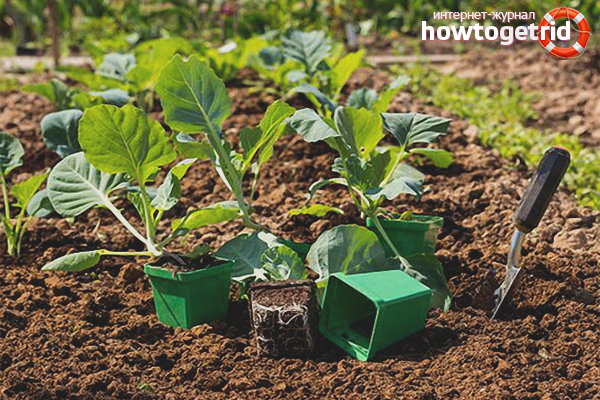


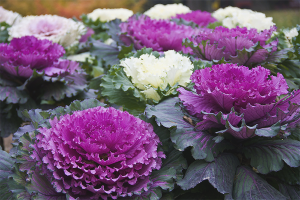
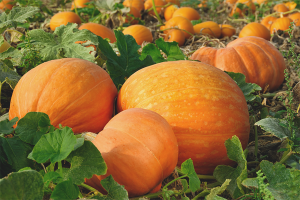
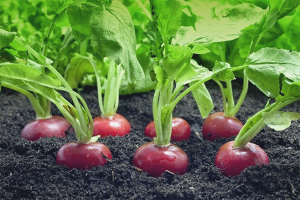
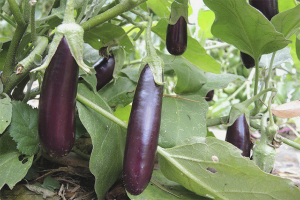
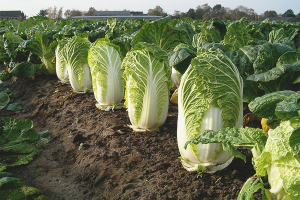

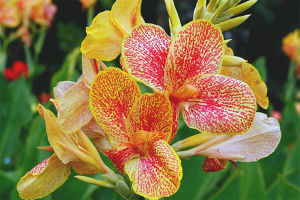
Submit